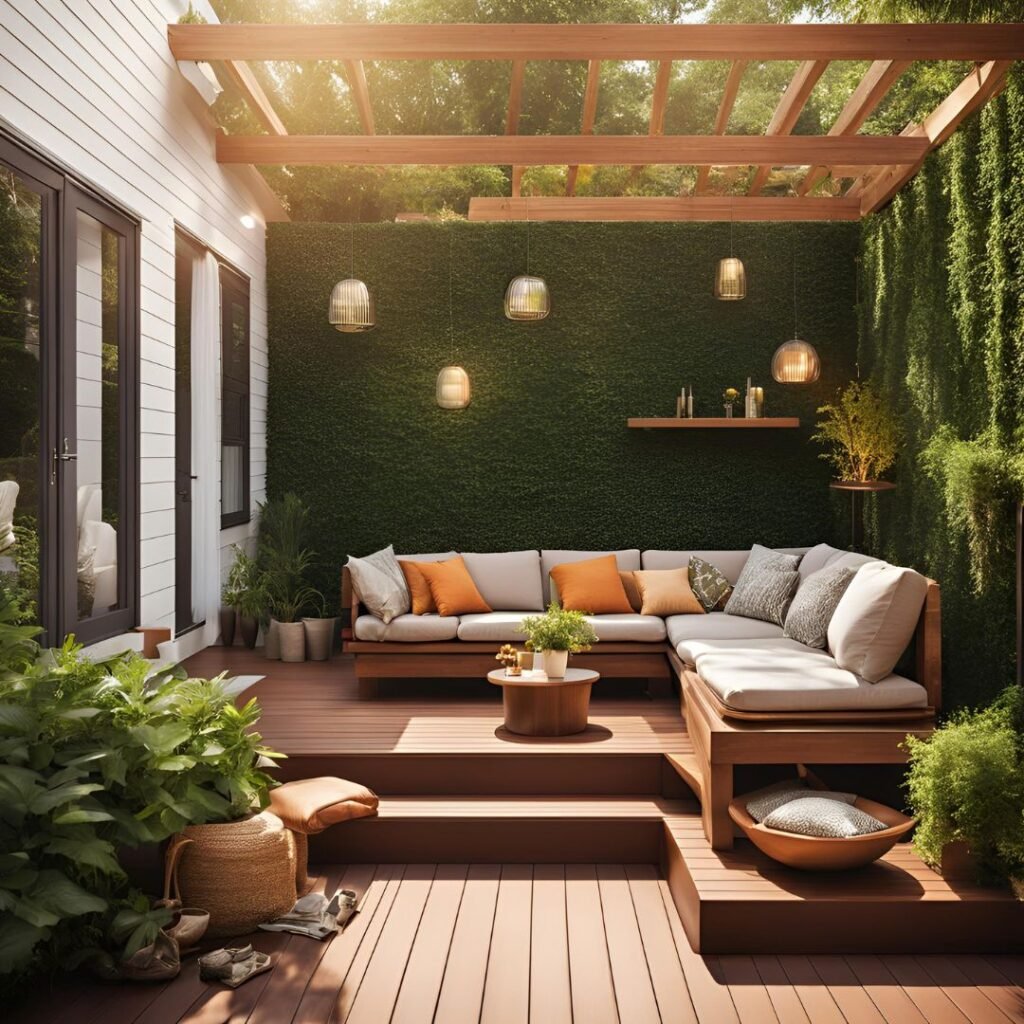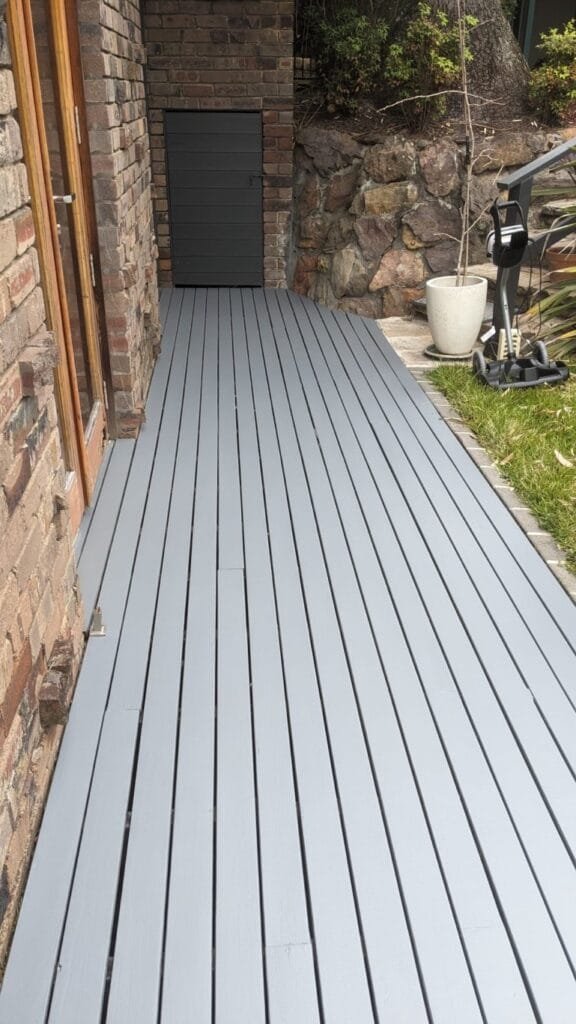
For decks that experience heavy foot traffic, using a stain instead of paint is highly recommended. PPG’s premium stain, ProLuxe (formerly Sikkens), is available in transparent, semi-transparent, or solid finishes, offering superior protection and a natural look. Before staining, it’s crucial to clean your deck thoroughly, as dirt can affect the final color.
If you prefer paint, choose a product that gives a natural finish. Oil-based paints offer a thick coating that fills cracks and gaps, enhancing the appearance of your deck. However, they absorb UV rays, requiring yearly reapplication, making them less ideal for long-term use.
Avoid painting a deck that has been recently oiled, as the paint will not adhere properly. You’ll need to remove the oil with a paint remover and sand the wood before applying a fresh coat.
Acrylic paint is a better alternative, providing a UV-resistant, protective layer that requires less upkeep. It works well on all types of wood, from cedar to redwood. For best results, follow the manufacturer’s instructions and allow proper drying time between coats to ensure a long-lasting finish.
Using acrylic paint also makes cleanup effortless. You won’t need harsh solvents—just soap and water will do the job.
Acrylic latex paint is highly durable, as it expands and contracts with changing temperatures. The latex binder prevents cracking in hot and humid conditions, resulting in a long-lasting, smooth finish for your deck. Plus, acrylic paint is mildew-resistant, offering additional protection.
Before applying acrylic paint, it’s essential to use a quality primer. This helps prevent wood from “bleeding,” where moisture causes blotchy and stained patches on your deck’s surface.
Ready to start your project? Sydney Elite Painters is here to support you every step of the way.




What Tools Are Essential for Painting a Deck?
Essential Tools for Painting a Deck
Painting your deck requires specific tools to achieve the best results. Here’s a breakdown of what you need for the job:
- Sanding Tools: To prepare your deck for painting, you’ll need effective sanding tools. An electric sander is the best choice for quickly sanding large areas, removing old paint or stain, and creating a smooth surface for primer application. While you can use sandpaper with a hand-held block, it can be time-consuming for larger decks.
- Crack Filling Supplies: If your deck has cracks, it’s essential to fill them with an exterior-grade putty before painting. Use a putty knife to apply the putty into the cracks, ensuring you scrape away any excess for a clean finish. Once the putty is completely dry, sand those areas again to achieve a flat and even surface.
- Primer and Paint Application Supplies: After preparing the surface, gather your primer and paint application supplies to complete your deck painting project.
By equipping yourself with these essential tools, you’ll be well-prepared for a successful deck painting experience!
Also read: Understanding the Differences Between Water-Based vs Oil-Based, and Acrylic Paints
What paint lasts the longest on a deck?
When it comes to choosing paint that lasts the longest on a deck, consider these options:
1. Oil-Based Deck Paint
Known for exceptional durability, oil-based paints penetrate deeply into the wood, providing strong moisture resistance. They are ideal for harsh weather but have a longer drying time and stronger fumes.
2. Acrylic Deck Paint
Acrylic paints are water-based and offer excellent UV resistance. They dry quickly and are easy to clean up, providing long-lasting durability while allowing the wood to breathe.
3. Solid Color Stains
Solid color stains penetrate the wood, creating a protective layer against UV rays and moisture. They are less likely to chip or peel, making them a practical choice for long-lasting protection.
4. Epoxy Paint
For maximum durability, epoxy paint is resistant to abrasion, chemicals, and moisture. It creates a hard protective layer, ideal for composite decks or concrete surfaces.
Applying Primer and Paint to Your Deck
To effectively apply an oil-based primer to your deck, start with a paintbrush for those hard-to-reach areas, such as gaps between boards and around posts. For larger, flat surfaces, a paint roller is more efficient and will help you cover the area quickly. Be sure to let the primer dry according to the product instructions; keep in mind that drying times may extend in cold or humid weather compared to dry, warm conditions.
Once the primer is dry, you’re ready to paint! Choose a high-quality, oil-based paint designed for outdoor use. Use a paintbrush for detailed areas and a roller for large sections to ensure an even application.
Selecting the right primer and paint is crucial for achieving a long-lasting and attractive finish on your deck. If you’re ready to tackle this DIY project, reach out to Paintzen for all the materials you’ll need. Alternatively, you can request a quote for professional assistance to get your deck painted by our experienced team.
